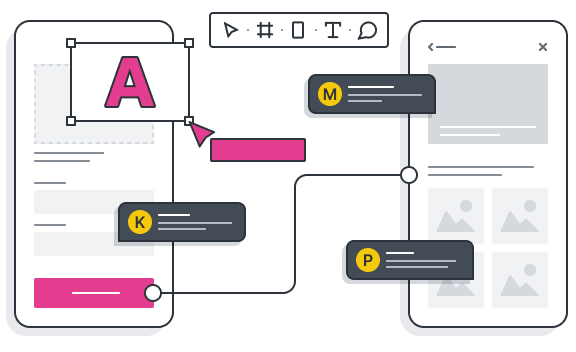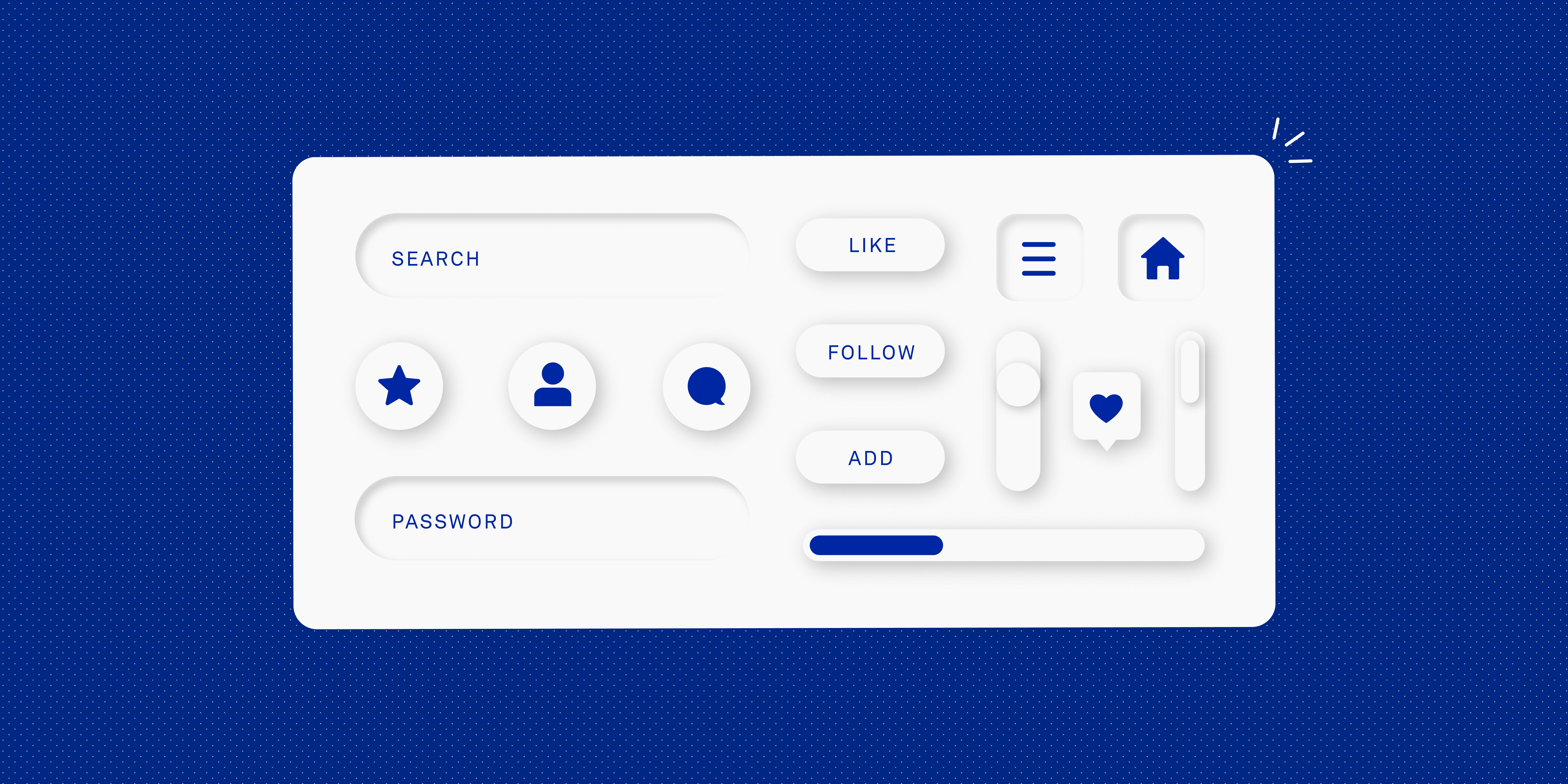Systems thinking looks at problems as part of a larger system. Instead of looking at the problem in a vacuum, systems thinking analyses all parts of the problem from the components to the environment and the relationships between them. This allows designers to tackle deeper problems not just react to symptoms.
In this blog post, we’ll define what systems thinking is, explain the difference between systems thinking and design thinking, and describe the importance of systems thinking in product design. Then, we’ll look at the benefits and challenges of systems thinking and examine how to apply systems thinking to the product design process. Finally, we’ll wrap up with some key takeaways.
What is systems thinking? A definition
Systems thinking means thinking in terms of the system as a whole. It can be applied to anything, from medicine to city planning, but for product designers, it means considering the way the relationships between different parts of a system will influence and interact with one another and how that will affect your design.
At its core, systems thinking is about looking at the whole rather than the parts of a system. That way, a product designer will know if the whole performs adequately, not just whether some parts do. If you look at the parts, the system may break down because one part may negatively impact another part. Designing for the whole system eliminates this concern.
What’s the difference between systems thinking and design thinking?
Both systems thinking and design thinking are two mindsets for problem-solving. However, while systems thinking is holistic, analytical, and focuses on the system as a whole, including the users and technology that are integral to the system, design thinking focuses on the users before considering anything else, making it a very human perspective on design.
So while you zoom out to see the relationships within the system in systems thinking, you zoom in to understand the users’ behavior in design thinking. Furthermore, you explore the system for opportunities for intervention in systems thinking, whereas in design thinking you look to quickly draft solutions.
While these two styles of thinking seem very different from one another, they can be integrated. This ensures your design solutions will deal with systemic challenges in a human-centric way. You can do this by developing systems thinking and design thinking.
Develop empathy for both your users and the system, understand why your users and the system behave the way they do and switch between zooming out and zooming in so you can experience both systems thinking and design thinking.
The importance of systems thinking in product design
Systems thinking is important in product design because it encourages people to think about the system holistically and analytically. This matters because it allows you to:
- Manage complexity. Systems thinking allows designers to understand that the product is part of the larger system and helps them manage this complexity.
- Solve the complete problem: While other mindsets only address the surface level of problems, systems thinking helps designers identify the root causes, leading to long-lasting solutions.
- Future-proof your product: By anticipating potential problems within the larger system before they happen, you can future-proof any product.
- Find user-centric solutions: By ensuring you comprehend the way users interact with the broader system, including their environment, you can ensure your solutions are intuitive and user-centric.
The benefits and challenges of systems thinking in product design
Systems thinking benefits the product design process by offering a more comprehensive approach to design. The benefits of systems thinking are:
- Framing problems in context so they can be examined more holistically before jumping to a solution.
- Understanding the problem at a deeper level because you’ve got different perspectives from those in the system.
- Grasping the relationships between themes and patterns within the system and how every element relates to every other.
- Making more informed choices by understanding how one choice may impact other pieces of the system.
- Expecting trade-offs to reduce the risk of unanticipated outcomes.
While there are many positives to system thinking, there are some limitations too. The challenges to systems thinking are:
- Analysis paralysis or getting stuck in the ideation phase without going into wireframes or prototypes.
- Overlooking the human needs that you can uncover with a design thinking approach.
- Considering the whole system can become overwhelming if you don’t prioritise critical components.
How to apply systems thinking to the product design process
Apply systems thinking to the product design process using these steps and best practices:
1. Map the entire system
Before you do anything else you need to understand the whole system and to do that you must map it out. Think about the social, environmental, technical, and other contexts that influence how the product fits into users’ lives. Consider who your users are, what their goals might be, and how your product is used.
2. Understand how different parts of the system impact one another
Next, you need to identify how different relationships and interactions impact each other. You might, for example, create journey maps that show how one user’s behaviour impacts another’s or the factors in the user’s environment that change how they use the product.
3. Consider the consequences of change
Every change has an impact. If you add a new feature to the product, how does it impact the user and the system? Changing one thing can have unexpected effects, frequently beyond the surface level.
4. Feedback loops are crucial
In systems thinking the cycle of action and reaction is critical to shaping the system over time. As a result, you should be asking for constant feedback from your users.
5. Don’t oversimplify
Systems are complicated and you shouldn’t shy away from this. Stay open so you can continue to learn and adjust to the system while you’re designing.
Now, let’s look at a case study where systems thinking had a real-world impact.
A Case Study: Slack
Slack is a widely used tool for messaging within organizations. However, as it scaled up, it faced significant challenges in maintaining a great user experience because the team at Slack focused on enhancing individual features instead of looking at the whole system. So they decided to adopt a systems-thinking approach to the problem.
Steps 1 and 2. Mapping the system and understanding how different parts affect each other
First, they mapped the whole system, identifying the entire user journey. This revealed how different features interacted and how users moved from newly onboarded to advanced feature usage.
Step 3. Consider the consequences of change
The team considered the impacts of change and decided that they needed to introduce functionalities to users gradually instead of all at once. This made the onboarding process more user-friendly and increased completion rates by 30%.
Step 4. Feedback loops are crucial
Slack established regular user testing sessions to ensure they’d be getting continuous feedback. This ensured that real user’s experiences could be baked into the team’s plans for improvements. It also caused feature utilisation to increase 20%.
Step 5. Don’t oversimplify
By considering every feature, the team made sure they all worked together seamlessly. This improved user engagement, with active daily users rising by 25% over the next six months.
Key takeaways
- Systems thinking means thinking in terms of the system as a whole. For designers, this means considering how different parts of the system will influence and interact with each other and how this will affect your product.
- Systems thinking and design thinking are problem-solving mindsets. But whereas systems thinking is holistic and analytical, design thinking is deeply human.
- The two styles are different but can be integrated by developing empathy for both your users and the system.
- Systems thinking is important in product design because it helps: manage complexity, solve the complete problem, future-proof your products, and find user-centric solutions
- The benefits of systems thinking are: framing problems in context, understanding the problem at a deeper level, comprehending the relationships between themes and patterns in the system, making more informed choices, and anticipating trade-offs.
- The challenges to systems thinking are: analysis paralysis, overlooking human needs, and becoming overwhelmed in thinking about the whole system.
- Apply systems thinking to the product design process by: mapping the entire system, understanding how different parts of the system impact one another, considering the consequences of change, baking in crucial feedback loops, and not oversimplifying.
Learn more about UX Design Institute’s university-accredited Product Design (UX/UI) Program.
And if you’d like to read more about design, check out these articles: What is human-centred design? A complete guide and 7 fundamental user experience (UX) design principles all designers should know.




